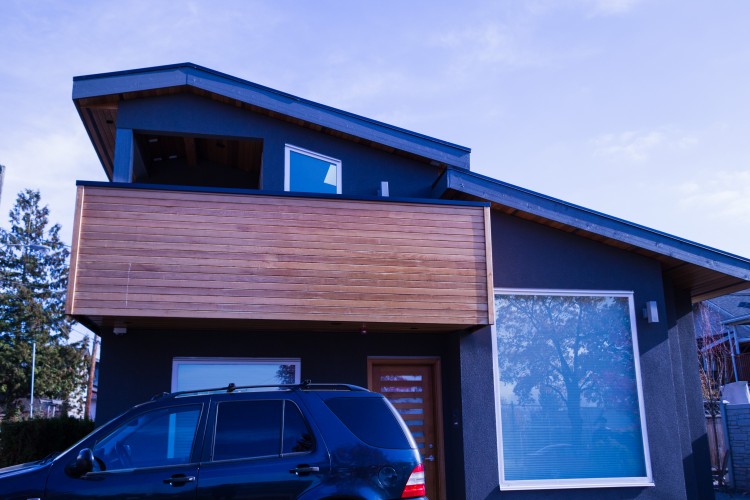
Laneway homes can decrease neighbouring property values in affluent areas: UBC study

Having a laneway house next door can significantly decrease the value of your Vancouver home, depending on where you live, according to a new UBC Sauder School of Business study.
Researchers found the presence of a laneway house within 100 metres of a property on the West Side of the city was associated with a 2.8 per cent lower sale price on neighbouring properties. Neighbours immediately beside a new home with a laneway house experienced an even deeper dip, selling for 3.8 per cent less, on average, than those beside new houses with a garage but no laneway home.
And in more affluent areas, having a nearby laneway house translated into a whopping 4.7 per cent drop in value.
On the other hand, in East Vancouver, the impact was almost zero.
“The overall effect is around 2.8 per cent, but that’s because the effect is so much larger at the high end. In many areas the effect was much smaller,” says UBC Sauder Associate Professor and study co-author Tsur Somerville (he, him, his). “I found that really striking.”
The researchers determined that laneway homes decreased neighbouring property values in more affluent areas because people may be concerned the additional density will put more pressure on amenities such as parking and schools, or they may have a distaste for renters more generally.
But mostly, neighbours simply don’t like the fact that laneway homes tend to look into their backyards, which limits the enjoyment of their outdoor spaces.
“We tend to understand our backyards as being private spaces, because our neighbours can’t look into them very effectively,” says Professor Somerville. “So, when the second floor of the neighbour's laneway is looking straight into the back of my house and into my backyard, that’s where we find the negative effects. That’s what we’re really picking up.”
The findings confirm what many see at zoning hearings with residents, especially from the West Side, saying, “not in my backyard,” says study UBC Sauder Associate Professor and co-author Thomas Davidoff (he, him, his).
“We're pleased to have added a data point in what's becoming the very hot topic of ‘nimbyism’ – the behaviour of someone who does not want something to be built or done near where they live. People prefer trees to neighbours, and that’s not totally surprising.”
But understanding people’s preferences is essential, he adds, because they have a big effect on what the government does when it comes to decisions about density.
“How many people get to live in the prime cities can affect unemployment and national productivity, and certainly housing affordability. There are consequences to these public choices,” says Professor Davidoff. “So understanding, at a bit more of a granular level, how neighbouring density affects homeowners is essential.”
The researchers examined real estate sales records across Vancouver from 2009 to 2017. Some of those new houses had laneway homes while others only had a garage. They also conducted many tests to ensure there weren’t other factors at play. For example, they examined historical data to see if the homes beside new laneways had sold for less than average in the past. (They hadn’t).
In 2009, the City of Vancouver rezoned 95 per cent of single-family properties so owners could build laneway homes in their backyards. Since then, nearly 3,000 of the tiny homes have been built across the city and they have also become a common feature of new builds and can provide additional housing for renters or family members, generate income for homeowners, boost property values and help city planners create more housing without the disruption of townhouse complexes and condo towers.
Interview languages (Tsur Somerville): English, Hebrew
Interview languages (Thomas Davidoff): English